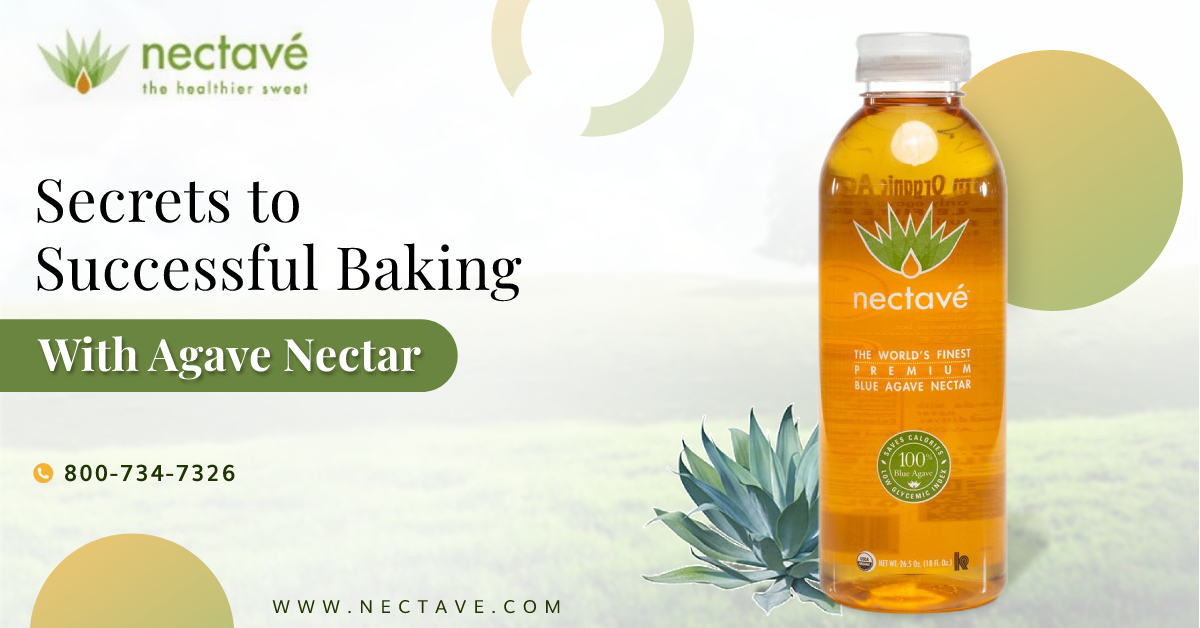Agave nectar is quite a popular sweetener today. It’s not a very complex ingredient to include in your kitchen and use it every day to make sauces, tea, coffee, smoothies and juices. But using organic blue agave nectar in baking may require a little know-how. The presence of sugar in cakes and pastries makes it perfectly delicious and when you’re substituting it with agave nectar, you need to know the art of balancing it so that you don’t start missing sweet sugar!
Agave nectar is a quick-dissolving sweetener that is obtained from the pinas of agave plants. It is a natural sweetener that comes with a low-glycemic index and can be used in a wide variety of foods and beverages, including baking recipes.
Here are a few crucial things to remember when using agave nectar for baking.
Using Organic Blue Agave Nectar for Baking – Things to Know
- Mix agave nectar properly: Agave nectar, when using for baking, must be mixed properly. If it’s not blended well, agave nectar forms a thin oily layer on top. For baking your cakes and cookies correctly, it is important to blend the dough very well. The sweetness should be uniform and the fats as well as other ingredients must mix appropriately before the preparation is put inside an oven or refrigerator.
- Decrease the oven temperature: Baking a cake or pastry using agave nectar undoubtedly improves the deliciousness of the preparation but you need to be careful so that your would-be light golden cupcakes do not become unappealingly brown.Organic blue agave nectar turns baking goods brown faster in contrast to table sugars when set on excessively high heat. But you can perfectly prevent that from happening if you remember to reduce the oven temperature to 25 degrees Celsius.
In addition, you can also cover the pan with aluminium foil to keep browning at bay and serve sweet, soft, spongy blueberry cheesecakes right away!
- Don’t neglect parchment paper: Foods prepared with agave nectar tends to be a little sticky but you can cut that out by using parchment paper.Using parchment paper at the base of the container makes it easier for the baked item to be lifted and transferred. It doesn’t render your cake to be extra sticky as the paper absorbs all the pastiness. So, remember to pull away the parchment paper from beneath and sides after taking off the baked goodie from the container. Allow it to ‘breathe’ for a few minutes before you begin slicing or decorating.
- Perfect quantity of agave nectar for cakes and cookies: It is completely possible to replace 100% of the sugar content in baked items. But when making cakes and cookies and using agave nectar instead of sugar, we often use only a partial amount, which can even be less than the required quantity. As a consequence, your baked item doesn’t taste as sweet as it should. In fact, you should taste and test to know the adequate quantity that works best for you.As a rule of thumb, you can:
- Cookies: Replace 1/3 of sugar with agave
- Cakes: Replace ½ of sugar with agave
- Brownies: Replace ½ of sugar with agave
Final thoughts: Agave nectar is well-known for having a low glycemic index and has a more neutral flavor than honey, maple syrup and other sweeteners. This means that you can use it to make various food items and beverages without fearing an alteration of the actual taste. Should you be looking for a reliable manufacturer of organic blue agave, you can reach out to Nectave. We stand out for producing the finest agave nectar products that are sustainably sourced from the Tequilana Blue Weber agave plants only. Moreover, our products carry Natural Certification and are fully FSMA compliant. You can visit https://www.nectave.com/ and place your order now!
Tags :
4 Things to Know When Using Agave Nectar for Baking
organic blue agave




